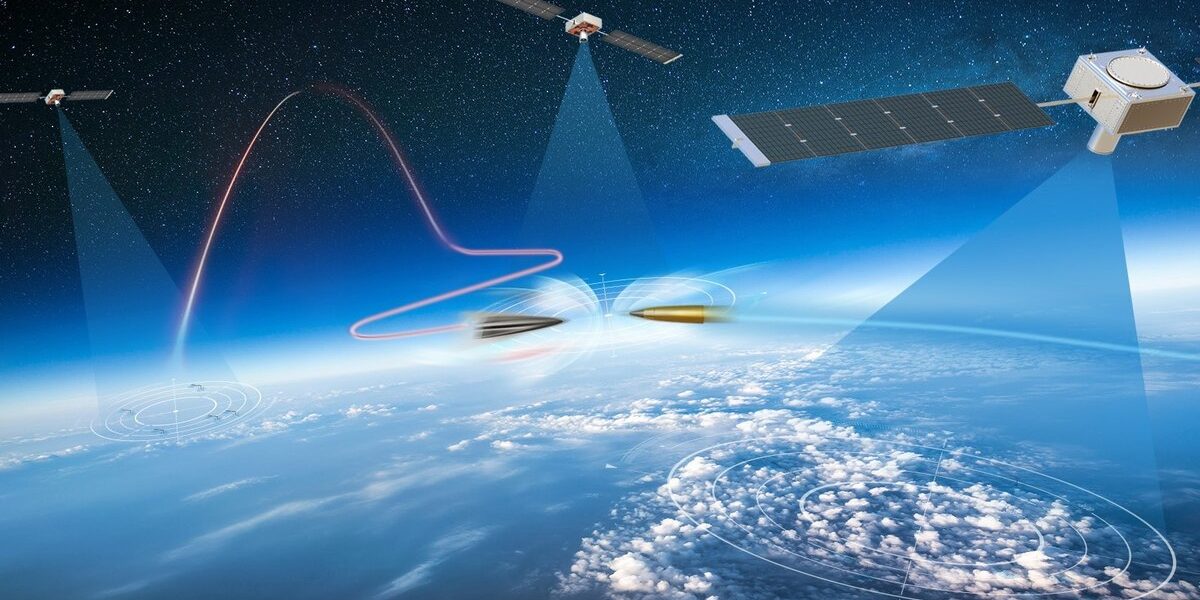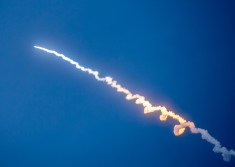SDA solicits industry studies on potential capabilities for Trump’s Iron Dome for America

The Space Development Agency is looking for industry to conduct studies on how the organization’s Proliferated Warfighter Space Architecture (PWSA) can be integrated into President Donald Trump’s ambitious plans to boost homeland missile defense.
SDA published a solicitation on Wednesday calling for “executive summaries” from vendors interested in performing 60-day studies focused on leveraging the PWSA and other capabilities into the “Iron Dome for America” — a sprawling effort to improve the United States’ defenses against advanced adversary missile threats. Trump’s executive order about the capabilities, issued Jan. 27, envisions a modernized, multilayer missile defense posture that would lean heavily on space-based systems, including the PWSA.
According to the solicitation, SDA is interested in executive summaries of “novel architecture concepts, systems, technologies, and capabilities” to accelerate future PWSA tranches or create new capability layers that would address other emerging requirements.
“SDA is soliciting executive summaries to study and provide recommendations for an Iron Dome for America architecture. These studies will inform SDA on concepts for such an architecture and how the PWSA could contribute,” the document stated.
Trump tasked Secretary of Defense Pete Hegseth to develop a strategy that includes “a reference architecture, capabilities-based requirements and an implementation plan” and deliver it to the president by March 28.
While the directive calls for development of new space-based interceptors, it also pushes for expediting ongoing efforts — including “development and deployment of a custody later of the Proliferated Warfighter Space Architecture,” the EO states.
The PWSA is a planned mega-constellation comprising hundreds of satellites stationed in low-Earth orbit, with a transport layer for data relay and communications payloads and a tracking layer for missile warning and tracking sensors. The program is led by SDA, which intends to launch the satellites every two years in “tranches.”
Trump’s executive order gives the agency the green light to develop and deploy a custody layer within the PWSA architecture. Whereas tracking sensors focus on detecting potential missile threats to provide early warning, a custody layer maintains continuous surveillance on specific targets for “left-of-launch” missile defense.
Some of the agency’s ongoing efforts are already developing custody layer capabilities, such as the experimental Fire-control On Orbit-support-to-the-war Fighter (FOO Fighter) program and the Gamma variant of SDA’s Tranche 2 Transport Layer. But the new call to industry goes a step further by asking for “opportunities to accelerate technically mature and novel phenomenologies into the PWSA Custody Layer and Tracking Layer.”
The solicitation also seeks input on ways to fast-track Hypersonic and Ballistic Tracking Space Sensor (HBTSS) capabilities into the PWSA’s tracking layer, referring to sensors deployed on a constellation of demonstration satellites developed by the Missile Defense Agency that launched last year.
SDA has since decided to adopt the same types of sensors — which use high-fidelity, medium-field-of-view cameras suited for sending targeting data to interceptors — in some of its tracking layer payloads.
Meanwhile, MDA published its own request for information last month that similarly sought industry feedback as to how it could contribute to Trump’s Iron Dome for America. The document asked industry to provide details on “new system-level capabilities, component concepts, upgrades to existing capabilities, or new [concepts of operations] across the kill chain” that could be delivered or demonstrated in two-year time periods, beginning no later than the end of 2026.
MDA’s RFI points to lines of effort outlined in Trump’s executive order, including acceleration and deployment of HBTSS. It does not, however, specify whether that would mean a follow-on program to operationalize the constellation or development of new medium-field-of-view cameras that would deploy on other satellites.
During a posture hearing in front of the Senate Armed Services Committee on Thursday, head of North American Aerospace Defense Command (NORAD) and U.S. Northern Command Gen. Gregory Guillot underscored HBTSS as a key system for accurately tracking hypersonic missiles.
“We have some capability already that can detect intercontinental ballistic missiles, but those are fairly easy to track because of the ballistic profile,” Guillot said. “Whereas the hypersonics are both maneuverable and much faster, so getting the space-based capability to detect and track those that could cue defeat mechanisms in the end is imperative.”
SDA’s call to industry also outlines six other potential topics for the 60-day study: high-fidelity modeling, simulation and analysis capabilities; optimization of the PWSA’s transport layer in supporting missile defense; supply chain analysis; space and ground architectures; on-orbit sensor data processing, multi-sensor track fusion and low-latency dissemination; and software solutions to enable autonomous satellite operations.
According to the solicitation, the agency is considering awarding multiple vendors to conduct studies and “strongly encourages” submissions to be delivered no later than Feb. 28.






